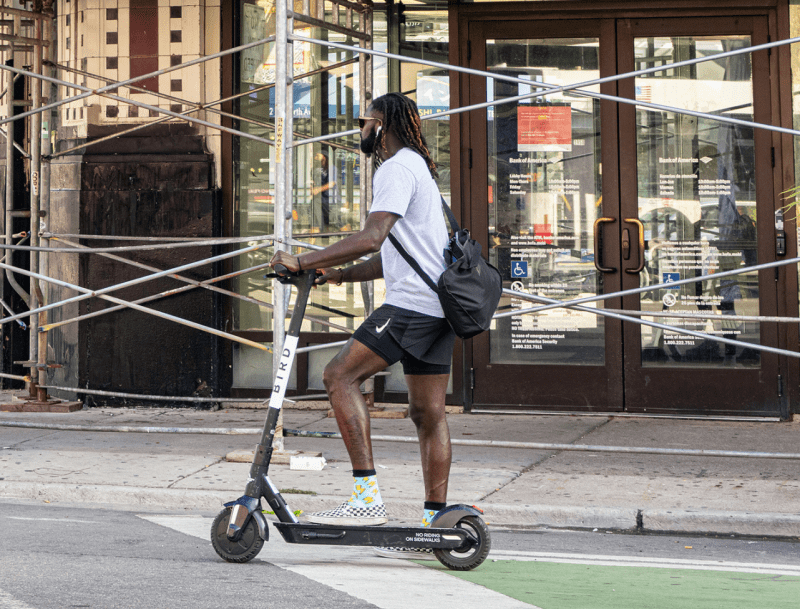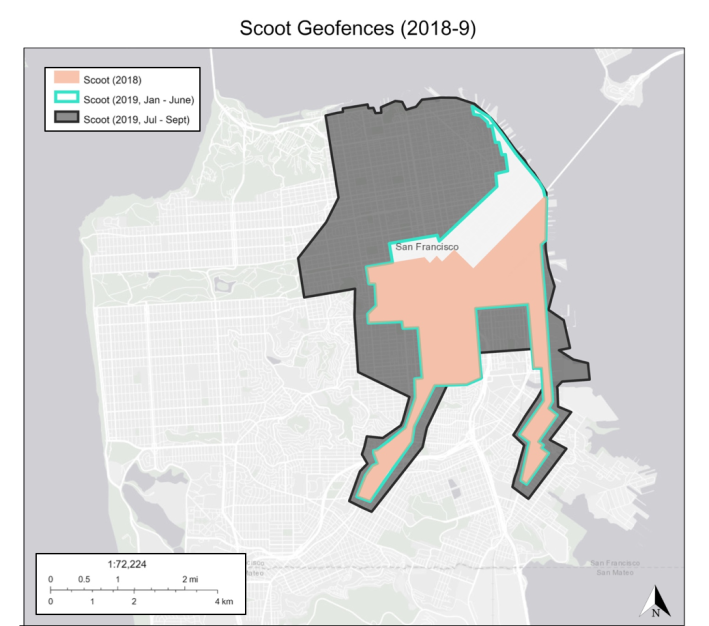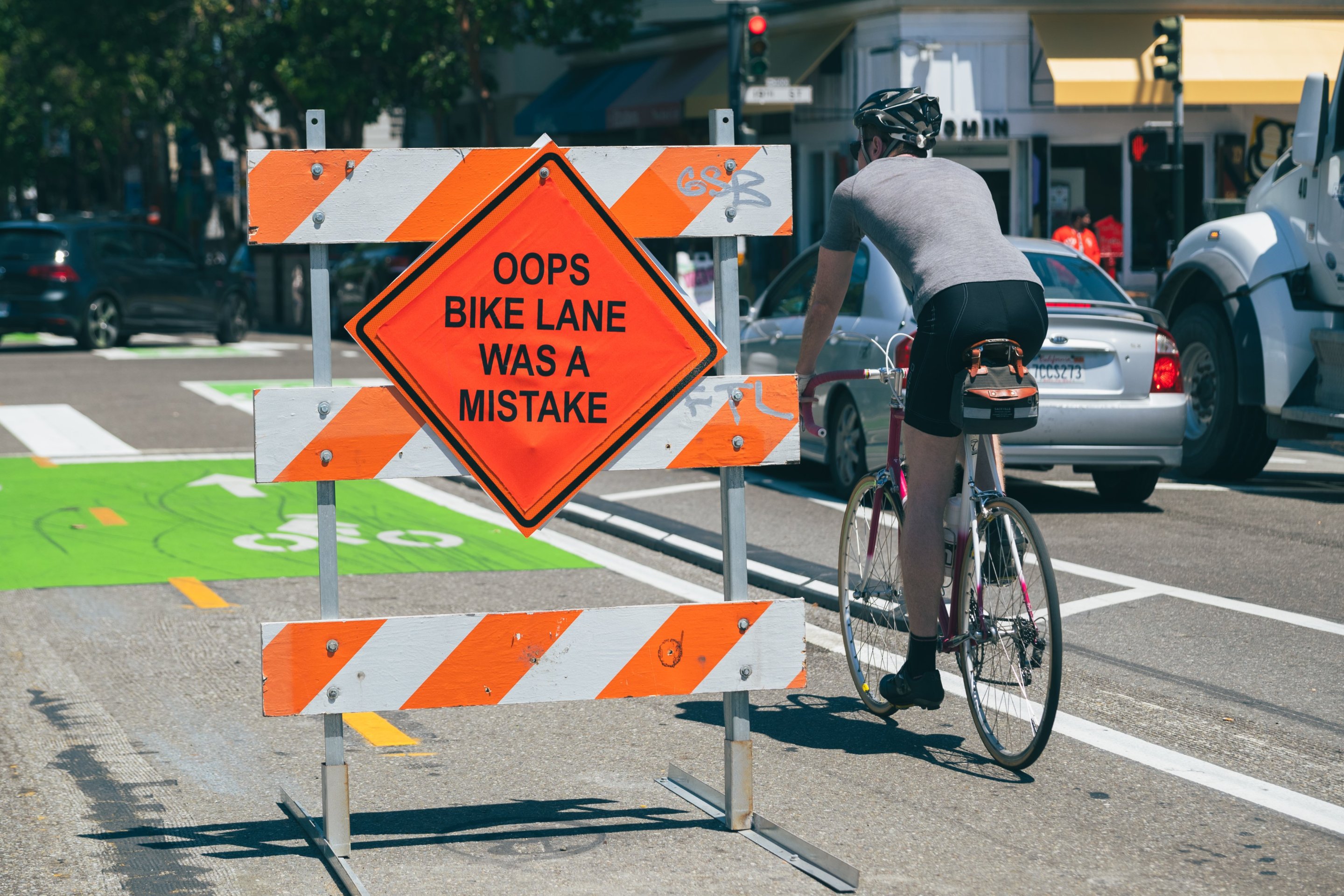Study: Balancing Equity & Density with Scooters
5:00 PM PST on February 8, 2021

Photo: Active Trans
Note: GJEL Accident Attorneys regularly sponsors coverage on Streetsblog San Francisco and Streetsblog California. Unless noted in the story, GJEL Accident Attorneys is not consulted for the content or editorial direction of the sponsored content.
How should scooter companies and regulators deploy in a way that helps disadvantaged communities of color without spreading fleets so thinly that they cease to be useful? That's a question the study Drawing the map: The creation and regulation of geographic constraints on shared bikes and e-scooters in San Francisco by UC Berkeley's Marcel E. Moran attempts to help decipher.
"I analyze three years worth of changes to shared bike and scooter geofences in San Francisco (2017-19), demonstrating the tension between operators' interest in emphasizing the densest areas of a city and the public-sector desire for spatially-equitable coverage," Moran told Streetsblog. "I also reviewed SFMTA's permit guidelines and the applications submitted by operators, which further shed light on how these 'geofences' were constructed."
As Streetsblog readers will recall, San Francisco originally banned scooters--and then set up permit programs with caps and specific requirements, including low-income programs. There are now three companies operating in the city: Lime, Scoot, and Spin.
The regulations also require scooters to have a "lock-to device, clear parking guidelines and parking enforcement," and a "complaints database." However, according to Moran's 22 page report:
...less attention has been paid to the way private operators spatially constrain access to their fleets, such as via the use of virtual geographic boundaries (hereafter “geofences”), or how municipalities have regulated these features. San Francisco, given it is home to a number of these schemes, presents a compelling case for studying geofences, and how regulators have sought to influence them to further public policy goals, including spatial equity.

The study also asks:
If bike-share is meant to provide transportation alternatives to a wide swath of neighborhoods, stations cannot only be placed within office centers or high-end commercial districts. Such bike-share-planning outcomes can reinforce existing transportation inequities or “transport poverty” across cities, which have often left low-income neighborhoods with less access to transit than wealthier ones as well as jobs. Indeed, the trade-off between coverage and ridership, in that ridership generally does not increase as coverage expands beyond dense areas is well covered in the literature, not only for bike-share, but also for transit. Beyond finances, others have noted that the tension between ridership and coverage also relates to environmental sustainability, in that transit systems which are restricted to dense areas (and not outlying peripheries) can be less carbon intensive per rider.
The study identifies related deficiencies in how scooter deployment is regulated. For example, the regulations don't coordinate non-docked bike-share deployment with scooter deployment, two modes which could compliment each other. "...nothing in the floating bike-share permit references shared e-scooters, or vice versa."
Prior to the pandemic, one of the biggest conundrums in transportation planning and regulation was how to deal with the influx of new mobility modes--mainly, GPS/app-based rental scooters and bicycles. They raised the ire of many advocates--seniors and the disabled pushed back against the way they were frequently dumped onto sidewalks, occasionally blocking passage. Others saw them as a way to grow constituencies for safer streets and bike facilities. Some consider e-scooters and bike-share as an inexpensive alternative for people living in communities with poor transit access, or a tool of gentrification.
It's an interesting study that should be required reading for anyone interested in these issues, charged with regulating scooter and bike-share companies, or for the companies themselves as an important tool in balancing profits with regulatory requirements.
Here again is the PDF.
Stay in touch
Sign up for our free newsletter
More from Streetsblog San Francisco
Valencia Merchants to SFMTA: We Want Curbside Protected Bike Lanes
Valencia merchants association strengthens support for getting rid of the failed center-running bike lane and replacing it as soon as possible with curbside protected lanes
S.F. Fire Apologies for Tweeting About Imaginary Bike Rule
There is no rule in California that says cyclists have to ride single file




